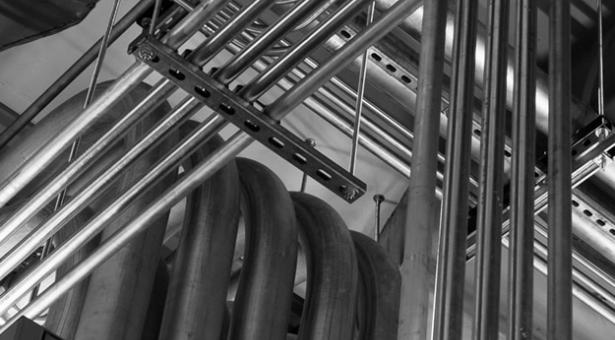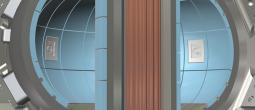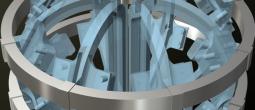

Reactor Coolant Simulation

The reactor coolant system transfers thermal energy from the reactor for power generation.
The coolant system is a Pressurised Water System which uses ordinary water in two separate, closed loops for thermal transfer. The water is pressurised to prevent boiling at the high temperatures needed for operation.
The separation of coolant loops means that only the primary loop, which passes through the reactor, is radioactive. The secondary loop - used for power generation - is not exposed to radiation, simplifying shielding and operation requirements.
Primary Coolant Loop
The primary coolant loop runs through the Reaction Ignition Shield Thermal Modules (RISTM) and draws thermal radiation from the reaction. This has the secondary effect of cooling the modules and reducing thermal transfer to the chamber wall.
From the reactor, heated coolant is transferred to a Thermal Exchanger, where coolant from the secondary loop passes around the primary loop, allowing the transfer of thermal energy.
The temperature of the primary coolant is reduced as a result of the exchange, allowing it to be pumped back into the reactor to repeat the cycle.
Secondary Coolant Loop
The secondary coolant loop uses thermal energy from the primary loop to create steam. This steam is used to drive a generation turbine, producing power.
Once past the turbine, the steam is passed through a Radiant Heat Sink Array (RHSA) to cool and condense it back to water. This water is pumped back into the Thermal Exchanger.
Generator
The generator is technically a sub-system of the secondary coolant loop but is treated separately for clarity.
The generator is made up of a turbine driven by steam from the secondary coolant loop. The turbine is connected to an alternator which converts the turbine’s motion into electrical power.








